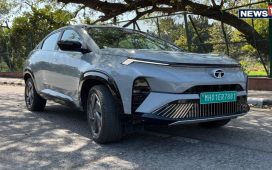The American automotive market imports new Japanese vehicles by the millions (not to mention all the legendary JDM cars we import ourselves), the Japanese market only buys a handful of American cars, if any at all. In reality, the Japanese domestic market is dominated by native manufacturers, with imports in general representing a fraction of total sales. The US import market is only a fraction of that, with less than one percent of new cars sold in 2024 hailing from the United States, the majority of which were Jeeps. But why is that?
Advertisement
The answer is actually more complicated than simply consumer bias, or the inconvenience of driving a car with the steering wheel on the wrong side (American cars didn’t adapt to right-hand drive markets until the 1990s). Rather, it involves a combination of factors ranging from taxation and other road laws which have nothing to do with imports, the cost of importing versus buying domestic, and size discrepancies.
Let’s get the obvious out of the way first. Most American cars are left-hand drive (LHD), excluding specialized models like postal Jeeps. For example, Ford didn’t produce a RHD Mustang until September 2015. But even if we push that aside, most Japanese consumers simply don’t want a car that’s designed with American sensibilities in-mind. The fact is that each culture has different transportation infrastructure, prioritizing various elements as determined by geography, zoning laws, and the political zeitgeist when each respective nation underwent its postwar developmental boom. Consequently, domestic Japanese roads aren’t terribly suited for popular models like pickups, and conversely, something like a kei truck looks out-of-place on American roads. Let’s dive in and discuss why.
Advertisement
Cars shaped by their drivers’ needs
In order to dissect this issue properly, first we must look at the Japanese transportation system and how the car fits into it. That’s because a significant fraction of city-dwelling Japanese use either the robust public transportation grid (like the famous Shinkansen bullet trains), walk, or own bicycles; put simply, cities like Tokyo favor accessible pedestrian travel and public transportation over private cars. Conversely, American cities rely more heavily on the highway system because many were constructed during the pioneering days of the automobile. Travelers often covered vast distances between cities, necessitating easy privatized transportation. The modern commute follows this trend, with workers expected to travel an average of 29 miles to get to work. Because cities were designed with automobiles in-mind, most American households own cars.
Advertisement
Japan does things differently. Seven of every 10 households own a car, and major cities like Tokyo and Yokohama are consistently rated among the most walkable locations to live. As for car owners themselves, most opt for compacts and kei cars and trucks due to road taxes and size restrictions; only Japanese companies produce new kei cars, which further skews the statistics. Many American cars won’t even fit in some driveways, either being too unwieldy to maneuver in the narrow streets, or sticking out into the road. Cities like Tokyo feature sky-high fees for parking and storing cars as well, further discouraging ownership. All this adds up to a customer base largely interested in compact, utilitarian cars and family movers, with the best-sellers frequently dominated by compacts, kei cars, and MPVs.
Advertisement
Rules of the road
Japanese road taxes favor cars with little or no ecological and physical footprint – something which the Japanese have succeeded at since the 1950s. In fact, they proved so successful that the 1975 Honda Civic never required modification to meet stringent American government regulations on emissions, thanks to its specialized cylinder head. Modern Japanese cars continue this trend in spades, with compact passenger cars comprising over 23 million of the 46.7 million cars registered in Japan, plus a further 8 million compact utility trucks. In total, kei cars and compacts account for over half of domestic sales in 2024 – and that’s an ongoing trend, continuing a decade after the 50% tax hike on kei cars.
Advertisement
These vehicles sell so well because they’re inexpensive to practically own and use. Kei cars cost less to insure, Japanese inspections levy substantial fees on larger cars, and they sip gas. This last point rules out many American full-size trucks for use in fleet markets, which are subject to compulsory fuel economy laws mandating a fleet-wide standard of 25.4km/l, or 59.7 MPG, by 2030.
Jeep is the only American manufacturer which defies this trend (though not by much). It produces all models in RHD configuration, a welcome bonus for the everyday Japanese. Moreover, the Japanese market views these vehicles as trendy and handy to own, being more compact than many comparable American trucks. So it is certainly possible for Japan to buy more American cars, but that would ultimately either require an established name like Jeep, or cars tailored towards the unique Japanese infrastructure.
Advertisement









